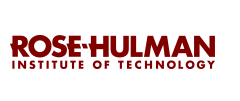Date of Award
Spring 5-2015
Document Type
Thesis
Degree Name
Master of Science in Optical Engineering
Department
Department of Physics and Optical Engineering
First Advisor
Charles Joenathan
Second Advisor
Robert Bunch
Third Advisor
Ashley Bernal
Abstract
When a highly high coherent light propagates through a medium, interactions between light and the medium produces a unique intensity speckle pattern that is dependent on several factors such as particle size in the medium, wavelength of the light, concentration of medium, and scattering angle. Speckle patterns from either static or dynamic specimens have been studied using optical techniques due to its non-invasive nature. Speckle patterns from biological specimens (dynamic) are different from that of the static specimens since random movement of molecules (Brownian motion) in the biological specimen affect the light interactions and thereby the intensity of the speckles in the speckle pattern. Several studies have shown the optical properties of the biological specimen can be characterized using statistical properties from the speckle pattern. A histogram of intensity distribution of the speckle pattern can be used to extract certain optical properties of the specimen such as bioactivity, blood flow, and skin perfusion. In this thesis, a new approach for analyzing biological specimens is presented utilizing a peak shift in the histogram plot (called the Histogram Wavelength Analysis Method) of the intensity of the speckles when changing the wavelength of the incident light. Five different wavelengths were used in a modified slit-lamp equipment for the experiment. Also six different sizes of nanobeads embedded in vitreous humor (biological specimen) were studied. The theory developed for this experimental method matches well with the results and will be presented in the thesis
Recommended Citation
Oh, Wanseok, "Study of Laser Speckle Scattering in Vitreous Humor Models" (2015). Graduate Theses - Physics and Optical Engineering. 8.
https://scholar.rose-hulman.edu/optics_grad_theses/8


Comments
There are many people who deserve recognition for their part in this thesis, but in this limited space I would like to name few of the greatest contributors. To my beloved wife, Miran Hong, I give this as a small consolation for all you have sacrificed for our family. Your selfless devotion has been essential for the realization of this thesis. To my first son, Liam E. Oh, and my unborn son, Luke S. Oh, you have been the main source of my joy and motivation to pursue this career path. My happiness will continue to come from watching you grow up soundly. I would like to express my deepest gratitude to my father, Seil Oh, and my mother, Jeongae Park, for their support and patience, without which I could not have finished. Also, I am truly grateful to my parents-in-law, Soonkwon Hong, and Kio Bae, for encouraging me with their best wishes. I would like to express my sincere gratitude to my grandmother-in-law, Seyoung Oh, for praying for spiritual and physical health and a promising future of my family. I would further like to thank my sister-in-law, Mihee Hong, for her devotion and sacrifice to my family. I would like to express my special appreciation to my advisor Dr. Charles Joenathan for giving me continual guidance, unlimited enthusiasm, and immense knowledge toward completion of this work, and for his gracious understanding during his tenure as my professor. I could not have imagined a better advisor and mentor for IV graduate study. I would like to thank Dr. Ashley Bernal for her willingness to serve on my advisory committee and for her tremendous time commitment in correcting and revising my thesis manuscript. I appreciate Dr. Robert M. Bunch for his service on my advisory committee and for his instruction into the theory of my research and for his discussion about my work. I would especially like to thank Dr. Nathan Ravi for engaging me an interesting fulfilling research topic. I am grateful to Paul D. Hamilton for his inclination to readily give his time and skills to help with my experiment. I would like to express warm thanks Dr. Chibum Lee and Dr. Wonjong Joo for their generous attention to my education. I would like to express my sincerest thanks to Benjamin D. Hall for his invaluable time and thoughtful behaviors to enrich my life. I would like to acknowledge The Department of Physics and Optical Engineering at Rose-Hulman Institute of Technology and The Department of Ophthalmology and Visual Sciences at Washington University School of Medicine in St. Louis for allowing me to use its laboratory and equipment throughout this study. May the almighty bless you with everything best in life!